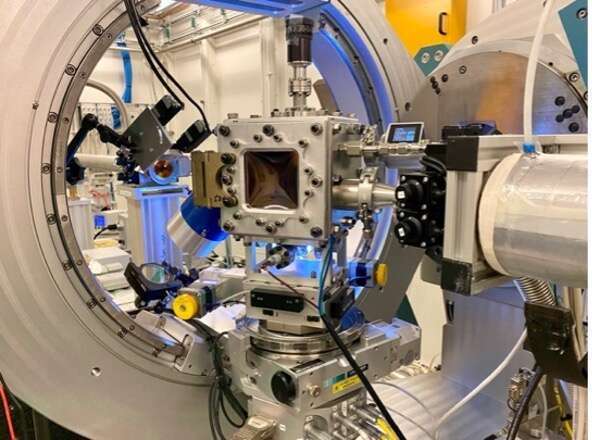
Mobile pulsed laser deposition equipment for in situ investigation at synchrotron radiation facilities
2PETRA III Extension, Deutsches Electronen Synchrotron, Hamburg, Germany
3Resonante Röntgenmethoden und Kristallmodellierung, Technische Universitaet Bergakademie Freiberg, Freiberg, Germany
Phenomena and effects on interfaces and in individual atomic layers play a key role in the modern material science, especially in the field of nanotechnologies (nanoelectronics, photonics, plasmonics, etc). The pulsed laser deposition (PLD) technique is a versatile tool with a capability of using a wide variety of materials to produce such structures. Synchrotron X-ray radiation offers a unique possibility for in situ investigation of layer-by-layer growing processes and for investigation of the as-grown structures.
Recently, we have designed and tested a new portable PLD chamber (Fig.1) at P23 beamline “In situ X-Ray diffraction and imaging” PETRA III synchrotron, which was used for in situ study of BaTiO3 thin films growth dependences. This experiment was focused on the critical thickness of the film depending on the strain induced by different substrate material. The substrates MgO(100), LaAlO3(100), SrTiO3(100) were used to apply compressive and tensile strains. Findings show possible effects of film thickness, growth temperature, and cooling rate. We obtain the data of in- and out of plane polarization direction behavior under different growth conditions.
Results of the experiment are of great interest for understanding the physical processes in ferroelectric complex oxides and will ultimately help to improve the understanding of the process of thin film formation, which can greatly facilitate their further integration into technological lines of electronic devices.
Drawing on this successful project and in view of the very wide range of scientific tasks that can be solved by such approach, we have developed a series of mobile PLD setups for various in situ and in vacuum synchrotron based x-ray techniques. All devices have a mobile configuration and are compatible with the existing and future beamlines at the PETRA III (Hamburg) and other synchrotron facilities.

Fig. 1. PLD growth chamber was installed on Eulerian cradle of Huber diffractometer.
Powered by Eventact EMS
